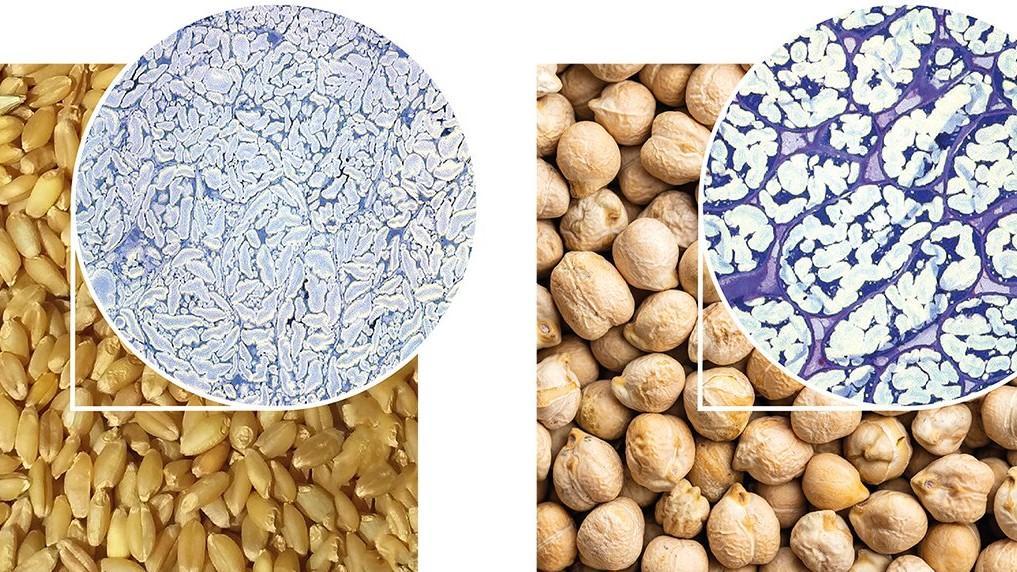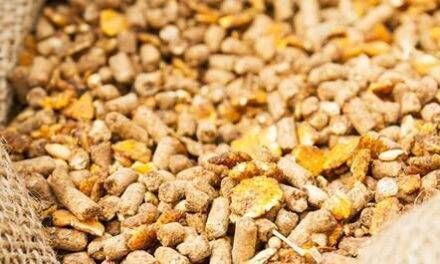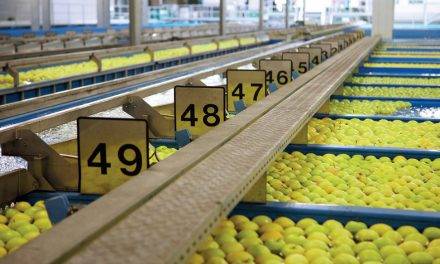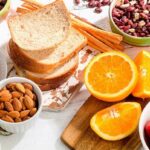A new study has shown how food processing changes dietary fibre structure and so affects the nutritional value of food
Phys.org publishes a post by by the Quadram Institute explaining how physical structure of dietary fibre underpins its benefits to health
Eating enough dietary fibre is important for gut health and is associated with lower risk of heart disease, type 2 diabetes and stroke. Most UK adults need to eat more dietary fibre to reach the target intake of 30 g per day.
Dietary fibre is found in plant-based foods, including vegetables, cereals grains and pulses, where the plant cell wall is the main source of dietary fibre. Most UK adults get much of their dietary fibre from processed foods that also contain a lot of starch, which can be easily digested into glucose. Eating too much of highly digestible forms of starch causes large spikes in blood sugar (glucose) levels and is associated with increased risk of type 2 diabetes, obesity and other diseases.
Incorporating foods in the diet that release starch much more slowly are more likely to help maintain health and reduce the risk of disease.
Researchers from the Quadram Institute and King’s have carried out a detailed study of how different sources of starch are digested when they are part of complex plant tissues.
The researchers compared tissues from chickpeas and durum wheat, plants that represent two different methods of storing starch reserves in their seeds or grains. In wheat, tissue called the endosperm provides the nutrition for the germinating plant. In chickpea, a legume, starch is instead stored in a leaf structure called the cotyledon. Chickpea cell walls are structured differently and are also thicker, and therefore contain more dietary fibre than wheat.
In their study, published in the journal Nature Food, the team combined microscopy techniques with advanced models of human digestion to track the effects of food processing on the different cell wall structures, and assess how this changed their digestibility.
They found that wheat and chickpeas had markedly different digestion profiles. This was mostly due to the differences in the cell wall structure. Wheat cell walls were permeable to alpha-amylase, the main enzyme responsible for digesting starch. But in chickpeas, starch inside the cells was not digested, except in cells near the edges of the tissue that had been damaged during milling.
Food processing techniques that preserve the cell walls lead to a ‘cell wall barrier’ that greatly reduces starch accessibility to digestion. This was confirmed in further studies that looked at the digestibility of porridges made with differently prepared chickpea powders. Freeze-milling, which damaged the cell walls, led to starch being broken down more rapidly than in porridge where the chickpea cells were left intact, thus retaining a cell wall barrier.
The digestibility studies were carried out using advanced simulations of the conditions for oral, gastric and small intestinal processing. For the gastric digestion stage, a state-of-the-art Dynamic Gastric Model was used, which not only mimics the way the stomach uses enzymes to breakdown food, but also realistically simulates the physical processes that mix and manipulate the food. This means that the researchers are confident that the changes in starch digestibility seen in these experiments would be of physiological relevance in humans.
These insights provide a rational basis for the development of new ingredients or food processing techniques that deliver more of the benefits of fibre-rich foods. In a separate study, the team have developed PulseON®, a new ingredient made from chickpea using different types of milling and drying processes that, unlike normal flour milling, preserve cellular structure and therefore starch resistance to digestion. The results of a recently published human trial showed that partly replacing wheat flour, made of refined carbohydrate, with PulseON® in staple foods like white bread lowered the blood glucose response by 40%.
This latest study of dietary fibre structure highlights a serious shortcoming of relying only on chemical analysis for characterising different type of fibre as the physical state is crucial in determining fibre’s encapsulating or ‘cell wall barrier’ effects. This is of particular importance for nutritionists and for interpreting the results of mechanistic experiments or human studies.
The study also raises questions about the efficacy of fibre supplements, as some of the fibre’s activity may be lost if the structural integrity of cells walls is not retained after food processing and during digestion.
Lead author Dr. Cathrina Edwards from the Quadram Institute said, “We have shown how a better understanding of fiber structure can help to design fiber-rich food ingredients and products that are likely to be much more effective in helping manage blood glucose, and so maintain health and reduce disease risk such as type 2 diabetes.”
Picture, Microscopy image showing different dietary fibre structures in wheat endosperm and chickpea cotyledon.
Credit: Cathrina Edwards, Quadram Institute
Source Phys.org











